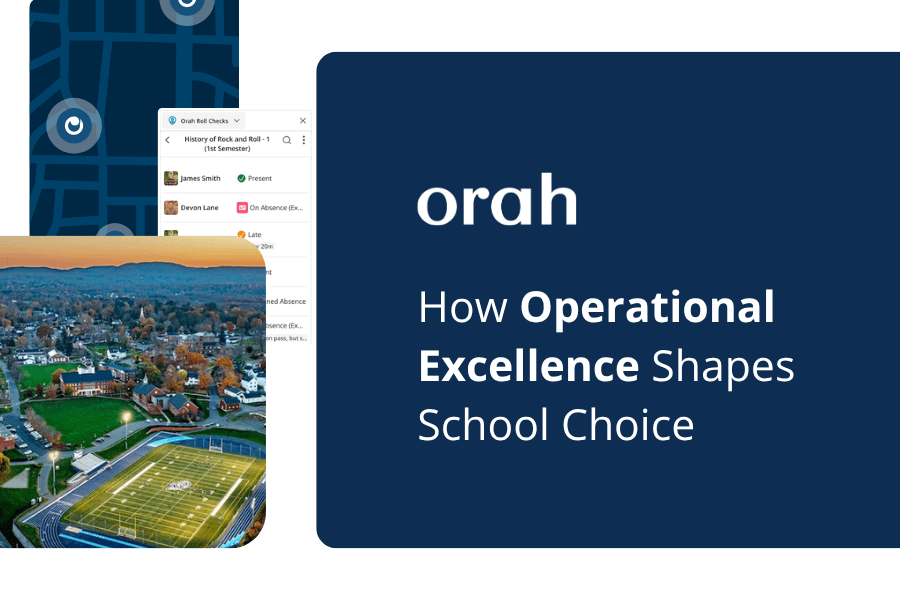Why Track Moods? Understanding The Effect of Emotions in Education
Kavyapriya Sethu
•
February 11, 2022

In the last decade, the idea of emotional intelligence has gained traction. Scientists and psychologists (with the help of brain-imaging technology) are hard at work trying to understand the workings of emotions. Pixar even made a movie in 2015 called Inside Out. It is one of my favorite movies to date. It tastefully depicted a child's emotional turmoil when she is forced to leave the place she came to know as home and move to another city. It delves into how her five key emotions—Joy, Sadness, Anger, Fear, and Disgust—evolve as they help her navigate her life. The movie offers us valuable lessons about recognizing and processing our complex and fluid emotions—a task that is not easy for humans of any age.

Today, especially amidst the COVID-19 pandemic, we are left to navigate a flood of feelings. We must be self-aware of our feelings and take appropriate measures to cope. Moreover, it is our responsibility to help children learn and grow.
With that intent in mind, let's delve a little deeper into understanding more about emotions, moods, why it is important to keep a check on them, and our role in helping our kids improve their emotional intelligence.
Mood vs. Emotions
We have all had days where we are moody, and it shows in our temperament and actions. Other times, we are in a good mood, influenced by activities like socializing with friends or having a productive workday. So we all have a basic understanding of mood. But how is it different from emotions? Moods and emotions are interlinked, making it hard to distinguish one from the other. According to Paul Ekman, a well-known psychologist and co-discoverer of micro expressions, there are five factors of mood vs. emotion—variations in duration, provocation, modulation, facial expression, and awareness of cause. To elaborate,
- Emotions are brief, typically lasting anywhere from a few seconds to minutes, whereas moods last longer.
- When you are in a bad mood, it usually reflects in the way you act and in your temperament. You are quick to get angry or irritated. Your threshold for what is needed to give rise to negative emotions is low.
- It becomes significantly more difficult to regulate one’s emotion(s) if they occur during or within a mood.
- When you emote a particular emotion, you also depict unique facial expressions associated with it. However, that’s not the case when you are in a particular mood.
- Often, we can specify what triggered an emotion, but that is not always the case with moods.
How do moods and emotions affect students' lives?
Recent research shed light on how students learn and the role of emotions in our lives. Emotions and cognition are intricately linked. And having a better understanding of our emotional system and the impact it has on learning will enable us to change how we approach teaching our kids, for the better.

“It is literally neurobiologically impossible to build memories, engage complex thoughts, or make meaningful decisions without emotions” (Immordino-Yang 2016, p.18)
Emotions affect learning and memory
Numerous research has also stated that emotion has a substantial influence on the cognitive processes in humans, including perception, attention, memory, reasoning, and problem-solving. These processes are critical to learning. When students face challenges with any of these functions, it can hinder them from retaining knowledge. If such is the case, doesn't it render schooling meaningless?
When we are in a positive mood, the brain secretes hormones (catecholamines, adrenaline, and noradrenaline), which help us perform at our best. On the other hand, when we are stressed, the brain secretes cortisol, which affects our memory. Cortisol levels rise when we are bored, frustrated, anxious, or when we experience strong negative emotions. Prolonged stress can lead to the destruction of neurons, as observed in laboratory animals.
“When educators fail to appreciate the importance of students’ emotions, they fail to appreciate a critical force in students’ learning. One could argue, in fact, that they fail to appreciate the very reason that students learn at all.” (Immordino-Yang 2016, p.40)
Schools need to incorporate emotion into the curriculum and stimulate an emotionally positive classroom experience to improve learners' engagement.
Emotions are an integral part of our decision-making
Have you faced situations where you let your emotions get the best of you? Here is a quote from Aristotle that accurately describes how difficult it is to regulate our emotions.
"Anybody can become angry—that is easy; but to be angry with the right person, and to the right degree, and at the right time, and for the right purpose, and in the right way-that is not within everybody’s power and is not easy."
No matter how smart you are, you won't succeed if you can't manage your emotional impulses. Because when we feel intense emotions, it inhibits rational thinking.
A quick lesson on biology to help us understand how this works. The neocortex is considered the rational brain and is responsible for assisting us with functions related to thinking and language: planning, questioning, making decisions, solving problems, and generating new ideas. The limbic system (as you can see from the picture) is the emotional brain, and it has been shaped over millions of years of evolution. Our emotional brain is faster than the rational brain. This has helped the survival of our ancestors; the body is alerted of danger, and the fight or flight instincts kick in. If the limbic brain is injured, we tend to lose memories and feelings, hindering us from making even simple decisions and hampering our capacity for relationships.

Today, we rely on both brains to work together to assess data and initiate action. But when we have strong emotions, the information tends to bypass the rational brain and go straight to the emotional brain, making us react suddenly. If we were to give in to our emotional impulses, we would be getting into trouble more often than we would like.
“Without a doubt, our emotions dictate our thoughts, intentions, and actions with superior authority to our rational minds. But when we act on our emotions too quickly, or we act on the wrong kinds of emotions, we often make decisions that we later lament,” says Dr. Carmen Harra, best-selling author, psychologist, and relationship expert.
Developing emotional intelligence allows us to take a step back to become aware of when we are being more impulsive. It allows the rational brain to kick in to make more calculated choices. And this is a lesson we have to actively help our kids learn so they can succeed in the real world.
Prolonged negative mood can be a symptom of mood disorder
There is an ongoing stigma around mental illness. We often brush it aside and believe it doesn't need medical attention as a physical illness does. Moreover, kids experience constant change. We often think their negative moods are a phase they would eventually grow out of. Here are some startling statistics that shed light on the severity of the situation.
10% of children and young people (aged 5-16 years) have a clinically diagnosable mental health problem. Yet 70% of children and adolescents who experience mental health problems have not had appropriate interventions at a sufficiently early age. And according to WHO, suicide is the fourth leading cause of death in 15-19 year-olds.
The consequences of not treating a mental illness early extend to adulthood, inhibiting one from leading a fulfilling life. Some common illnesses observed are mood disorders like depression, dysthymia, bipolar disorder, disruptive mood dysregulation disorder, premenstrual dysmorphic disorder, mood disorder due to a general medical condition, and substance-induced mood disorder.
What causes a mood disorder is not fully understood. Studies have stated that imbalances in brain chemicals affect mood. Environmental factors, such as unexpected life events and/or chronic stress, can also contribute to a mood disorder. It can also run in families, passed along in your genes.
Some signs of mood disorder in young people include:
- Frequently feeling sad, helpless, or lonely
- Having low self-esteem
- Lack of motivation or pleasure in previously enjoyed activities
- Problems sleeping and/or changes in appetite
- Difficulty with family, friends, and peers
- Feeling lethargy or fatigue
- Frequently complaining of physical problems like headaches or being tired
- Being aggressive or irritable
- Exhibiting high-risk behavior
- Expressions of suicidal thoughts
As parents and teachers, keeping a check on how young people are feeling can help shed insights into their overall health and wellbeing.
Mood impacts immunity
With the pandemic forcing us to worry about our health more than before, it helps to understand how we can enhance our immune system to stay healthy.
Research has been done to understand the link between mental and physical health. It has provided evidence that positive emotions can enhance the immune system. On the other hand, negative emotions do the opposite, i.e., stress hormones such as adrenaline and cortisol, when present in your body for a prolonged duration, suppress the nervous and immune systems.
Some insights have also been learned from the placebo effect. Your brain can convince your body that a bogus treatment is the real thing and stimulate healing. Clinical trials found that the placebos had no impact on the illnesses themselves but influenced outcomes like perceptions of nausea and pain.
"The placebo effect is more than positive thinking — believing a treatment or procedure will work. It's about creating a stronger connection between the brain and body and how they work together," says Professor Ted Kaptchuk of Harvard-affiliated Beth Israel Deaconess Medical Center, whose research focuses on the placebo effect.
The placebo effect is part of every medical procedure. Clinicians or psychiatrists may be able to improve the outcome of medical treatment by optimizing the contribution of the placebo effect. However, it was unclear why some people show a much stronger placebo response than others. After studying trials, they found that those with a higher capacity to control their negative feelings showed a stronger response to a placebo.
Nurture emotional intelligence in your children
As teachers and parents, we are responsible for helping kids manage their emotions. The first step towards that is building self-awareness. Just like how kids learned to speak, walk and do other amazing feats, they can learn to be more aware of what they are feeling and stop themselves from letting their feelings get the best of them. Remember the lesson on rational brain and emotional brain we had previously discussed. When one can clearly identify the emotions as they arise, they are transmitting the information to the neocortex, making the unconscious conscious. The children's book—The Color Monster by Anna Llenas—is a book that I have come to enjoy even as an adult. It beautifully articulates how a kid might feel when they are feeling a particular emotion. With the help of such books, you can help children be more self-aware.
This leads me to the second point. As part of your curriculum, it helps to teach students how to manage their responses to their emotions. The most common negative feelings they struggle with are anger, anxiety, and sadness. It is important that they understand that it is ok to feel these emotions, but they need to behave in a socially appropriate manner. For example, they can feel sad about something but screaming because they are sad is not socially appropriate behavior. The behavior is what we are trying to help them change. We often make the mistake of minimizing their emotions. Instead of telling them not to feel a certain way, teach them how to deal with uncomfortable emotions.
Here are some suggestions to consider
- Practice breathing deeply through their nose and then out through their mouth.
- Count to 10 before they act on their anger
- 5-4-3-2-1 coping technique for anxiety
- Identify mood influences, i.e., things they like to do that put them in a positive mood.
When one is more aware of their own feelings, it is also easier for them to empathize with others. In the long run, they are better at making friends and thriving in a relationship.
How can we help you help your students?
Nurture’s mood check feature helps you implement a safe space for regular check-ins with students, and collect data on how students are feeling. With its help, you can make data-driven decisions to support students and allow fewer students to fall through the cracks.
“The model is called the circumplex model of affect. It maps the spectrum of emotions across two axes - energy and pleasantness. The idea of thinking of your energy and your pleasantness as two separate dimensions has been useful for me. Consciously, deducing what impacts my energy and what impacts my pleasantness. It's pretty straightforward—good sleep, diet exercise, understanding what drains you, and what recharges you. I think just having that has helped me maintain my energy levels or manage my moods better. We have been using it to build the product (Nurture) for students to be able to use as well.” — Kurt Meyer, Co-founder @Orah
We recently rolled out the feature to our early adopters. To know more about how the feature works, read our blog here.
Interested in exploring Nurture for your school? Become an early adopter and be the first to test the look and feel of our new product. If you are interested, please drop an email to kurt@orah.com
Download your guide to knowing where students are
When you sign up, we'll send you a guide detailing what it takes to setup your daily operations to maintain student location awareness using your routine school processes like attendance, student leave, late arrivals, early dismissals & emergencies. You'll also recieve an invite to join the Orah community and get the quarterly newsletter.














